#happy 1917 day to those who celebrate
Explore tagged Tumblr posts
Text



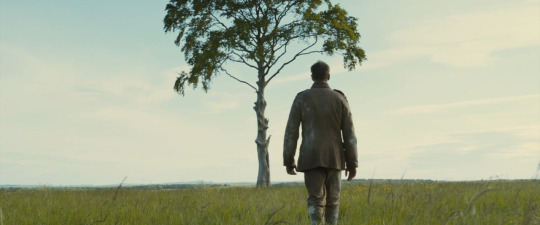
april 6th, 1917
#1917#1917 movie#happy 1917 day to those who celebrate#1917 (2019)#george mackay#dean charles chapman#miss them#this movie still means everything to me#1917 invented cinema
169 notes
·
View notes
Text
And just the parallels these people are drawing, trying to insult me, an Irish person, when I’m talking about freeing Palestine. They’re sooo telling.
All these people demanding Palestinian activists tell them whether or not they “condemn Hamas”, which is just such bullshit and a bad faith question. I highly recommend watching the interview the Palestinian ambassador gave on the bbc, just completely obliterating this question. But yes these people will then turn around to me as soon as I speak on Palestine, and ask “do you condemn the IRA!?!?!”.
Once again asked by people without a shred of knowledge on the history of Ireland or Palestine.
First, on the IRA. The IRA (Irish Republican Army) was formed in 1917 from the members of the Irish Volunteers and the Irish Citizen Army. Notice the key words “volunteers” and “citizen”. It was never an army, just a volunteer resistance force of Irish citizens. They didn’t even have weapons at the start. They would train in the woods holding hurls to substitute guns. It wasn’t until the risings when they received weapons donated by other nations supporting the Irish gaining freedom.
More Irish people (who didn’t have the army training the British forces had) were killed and imprisoned by the British, than they killed the British. Various risings and civil wars continued until the Republic came to be in 1948. The six counties of the North are still of course under British rule.
My point is, people (*cough cough* Americans) who “love” Ireland and are so happy that Ireland gained freedom, then turn around and ask us to “condemn the IRA/ Hamas”…
I’m not even going to go into the fact that the IRA has since splintered off into a million different factions and some of them are involved in organised crime, blah, blah. Because again, “condemning the IRA” for gaining freedom for the republic because of the later actions of SOME of them, is just bad faith!
People looovvvee Ireland and Irish culture and are glad the republic exists and are “sad” for the North, but don’t want to acknowledge that we’ve only come this far by violent resistance! If we could’ve just asked real nice for England to fuck off, in the 700 years they occupied us, we would’ve! Peace talks don’t do shit when one side is a colonising power that doesn’t want to leave the other alone!
And again, it’s assuming that colonisation and apartheid states aren’t violent themselves. In both Palestine and Ireland, our oppressors subjugated and forced us into unimaginable conditions for so fucking long. Then when people try to oppose them, they’re called terrorists?
I mean shit, you Americans even have your 4th of July where you celebrate how you guys violently overthrew the English and gained independence. Do we condemn those soldiers for killing British soldiers? I mean every Independence Day of every country involves form of violent rebellion… that’s how shit gets done.
Hamas is a small resistance group. The IDF is a literal army with actual training and the world’s best weapons provided by the biggest powers of the world. EVEN IF somehow Hamas was a big scary terrorist organisation with military grade weapons, what Israel is doing has nothing to do with Hamas. They are bombing fucking children, hospitals, refugee camps, journalists!! All of which are fucking war crimes.
Israel is flooding social media with propaganda about how the hospitals were “Hamas headquarters”. Taking pictures of a board with the days of the week in Arabic and claiming it’s “Hamas terrorist plans”.
This is what the English depicted us as, and it’s what Israel will depict Palestine as. Of course we’re going to support them.
A great quote from on of my favourite films (Pride, 2014) is: “I don’t believe the papers when they talk about us, why should I believe it when they talk about them?”.
151 notes
·
View notes
Text
Happy Finnish Indepence Day, Finland became an independent natio at 6.12.1917. Beforee that it was an automic paetbof Russia betweern 1809-1917, so next year it'll tie :)
Not that these days it's exactly unproblematic be particularly nationalistic. In Helsinki in particular our very own neo-nazis are making us normal folk extremely embarrassed, when we actually should be thankful for being Finnish instead of funny speaking countryside Russians. Racists and white supremacist just ruin everything for everyone. We should ve celebrating the end of exploitation and violence, and what do these "nationalists" wanna do? Be exploiting and violating people who aren't Finnish enough for their taste.
What even is Finnish really? When my family was forcefully evacuated from Karelia to Finland, people said those are not Finnish enough to live here, and now everyone is like at least 25% Karelian and did that make anybody less Finnish. Being Finnish nothing to do with your ethnic background, or you cultural differencies and language you speak, or the skin of your color.
I think being Finnish had all to do with us saying, we actually wanna take care of our own business here. We wanna take care of everyone around these parts, and every other ruler can just fuck off.
Then again, Finland has been very good at slowly destroying the foundations of our nation all og our own, sacrifing itself on capitalistic altar. It was a fundamentally Finnish idea that everyone regardless of background deserves a free quality education. That healthcare is for everyone. That we take care of each other, cos nobody else in pur neighborhood cares. I'd like celabrate that mentality, and not purity of ethnic kind.
7 notes
·
View notes
Text
Happy 1917 day to those who celebrate and condolences to those who mourn
11 notes
·
View notes
Text
Five facts you need to know about International Women’s Day

Every year on 8 March, International Women’s Day is celebrated to commemorate and honour women's accomplishments, raise awareness about gender disparities and discrimination, as well as promote global support for women.
But what do you know about IWD? We’re here to answer five important questions…
How long has International Women’s Day been celebrated?

On 28 February 1909, the then-active Socialist Party of America celebrated the first National Woman’s Day in commemoration of the 15,000 women who protested in New York against harsh working conditions and lesser wages.
In 1910, Clara Zetkin, a women's rights advocate and the leader of Germany’s Women’s Office for the Social Democratic Party, proposed the idea of a global International Women’s Day.
On 19 March 1911, the first International Women’s Day was held, with more than 1 million people in Austria, Denmark, Germany, and Switzerland taking part.
It took until 1975 for the United Nations to recognize and begin celebrating International Women’s Day (IWD). Since then, the UN has served as the major sponsor of the yearly event, encouraging more countries to recognize “acts of courage and resolve by ordinary women who have played an outstanding role in the history of their countries and communities.”
And for those wondering and feeling left out (get over it), there is an International Men's Day, which is celebrated on 19 November in more than 80 countries worldwide, including the UK. It has only been marked since the 1990s and isn't recognised by the UN.
What is the symbol and colour of International Women’s Day?
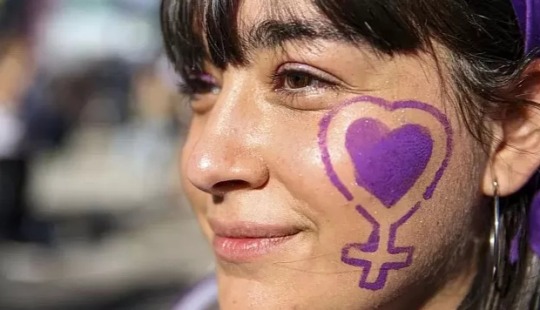
The symbol for International Women’s Day is a female gender symbol. It is usually accompanied by the colours purple, green and white.
According to the International Women's Day website, purple stands for dignity and justice, green for hope, and white for purity. "The colours originated from the Women's Social and Political Union (WSPU) in the UK in 1908."
Is it a holiday?

The day’s purpose varies by country. In some, it's a day of protest, while in others, it's a means to promote gender equality. In some countries, International Women's Day is observed as a national holiday.
IWD is recognized as an official national holiday in Afghanistan, Armenia, Belarus, Cambodia, Cuba, Georgia, Laos, Mongolia, Montenegro, Russia, Uganda, Ukraine and Vietnam.
In certain countries like Albania, Macedonia, Serbia and Uzbekistan, Women's Day has been combined with Mother's Day, a merger to highlight the importance of women as mothers.
In China, many women are given a half-day off work, while the Italian Festa della Donna is celebrated by the giving of mimosa blossoms.
Why is it a historical celebration in Russia?
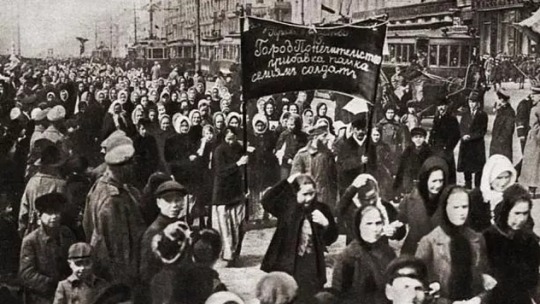
In 1917, the celebration of Women's Day in Russia got them the right to vote.
Women in Russia commemorated the day that year by going on strike for 'bread and peace' in order to protest World War I and campaign for gender equality. Tsar Nicholas II was far from happy and authorized General Khabalov of the Petrograd Military District to shoot any woman who refused to stand down. They did not back down and the protests remained and led to the Tsar’s abdication. The interim government granted women the right to vote as a result of their protest action.
What’s the theme this year?
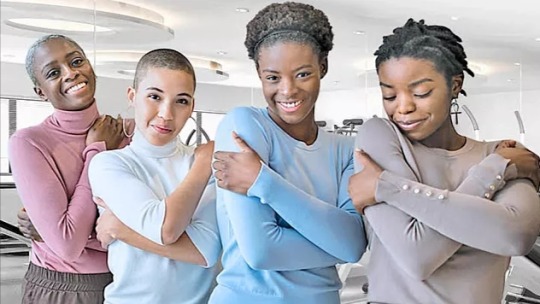
Ever since 1996, each International Women’s Day has an official theme.
The first theme adopted by the UN in 1996 was "Celebrating the Past, Planning for the Future".
Last year, the theme for IWD was #Breakthebias, which highlighted the issues women face due to gender bias.
This year, the International Women's Day website has stated that it’s #EmbraceEquity. As the website states, 2023 focuses on how gender equity needs to be part of every society's DNA: “It’s critical to understand the difference between equity and equality. The aim of the IWD 2023 #EmbraceEquity campaign theme is to get the world talking about Why equal opportunities aren't enough. People start from different places, so true inclusion and belonging require equitable action.”
The images linked to this year’s IWD all feature the hugging gesture, promoting giving equity a huge embrace.
Another highlight of this year is the UN's theme, which is 'DigitALL: Innovation and technology for gender equality', aiming to to make people aware of the importance and contribution of digital technology in unveiling issues of gender inequality and discrimination. IWD will explore the impact of the digital gender gap on inequality for women and girls, as the UN estimates that women's lack of access to the online world will cause a $1.5 trillion loss to gross domestic product of low and middle-income countries by 2025 if action isn't taken.
"From the earliest days of computing to the present age of virtual reality and artificial intelligence, women have made untold contributions to the digital world in which we increasingly live," the UN stated. "Their accomplishments have been against all odds, in a field that has historically neither welcomed nor appreciated them."
2 notes
·
View notes
Text


November is here and later this month we celebrate the holiday of Thanksgiving. Here are two images that relate to Thanksgiving.
This drawing is the second one from the Jon Gnagy art book that I wrote about last month.
The photo of the book relates to my family history. One of the lines of my ancestors came to America in 1632 - Elder John White and hi family. They sailed on the ship Lyon and left England about June 22, 1632. They arrived in Massachusetts onSeptember 16, 1632. Though not members of the original group of Pilgrims I suspect that he and his family and friends also celebrated a type of Thanksgiving with the yearly fall harvest. The book was originally published in 1860 and then updated in 1917 and then that edition was reprinted just a few years ago. It shows the genealogy of the family and tells stories.
But rather than me ramble on I have taken quotes from President John Kennedy and a scenes from one of my favorite television shows about Thanksgiving, A Charlie Brown Thanksgiving. I wish each of you happiness and comfort not only at Thanksgiving but also during all these days in which we live.
***** As we express our gratitude, we must never forget that the highest appreciation is not to utter words, but to live by them. John F. Kennedy.
*****
Linus van Pelt: In The year 1621, the Pilgrims held their first Thanksgiving feast. They invited the great Indian chief Massasoit, who brought 90 of his brave Indians and a great abundance of food. Governor William Bradford and Captain Miles Standish were honored guests. Elder William Brewster, who was a minister, said a prayer that went something like this: "We thank God for our homes and our food and our safety in a new land. We thank God for the opportunity to create a new world for freedom and justice."
Peppermint Patty: Amen.
Marcie: Don't feel bad Chuck. Peppermint Patty didn't mean all those things she said. Actually, she really likes you.
Charlie Brown: I don't feel bad for myself; I just feel bad because I ruined everyone's Thanksgiving.
Marcie: But Thanksgiving is more than eating Chuck. You heard what Linus was saying out there. Those early Pilgrims were thankful for what had happened to them , and we should be thankful too. We should be thankful for being together. I think that's what they mean by "Thanksgiving" Charlie Brown.
***** Happy Thanksgiving wishes to each of you.
1 note
·
View note
Text

History
In 1938, the first-ever National Donut Day was celebrated in Chicago, and the history of The Salvation Army’s Donut Lassies was officially immortalized. In 1917, these women were sent to France to establish field bases near the front lines. In makeshift huts, thousands of soldiers would come to stock up on essential goods and grab a sweet treat baked by the Lassies.



Both the presence of these courageous women and the donuts that tasted of home brought a light of hope and happiness to the battlefield — a much-needed morale boost for languishing soldiers. In fact, the Donut Lassies are also credited with popularizing the donut in the United States after the troops (commonly known as “doughboys”) came back from fighting in Europe. And still today, over a hundred years later, The Salvation Army continues to serve on the front lines through a wide range of social services for the most vulnerable individuals and families living in the United States.


Donut Day Origins: The Salvation Army created the first donut day event in Chicago in 1938 as a fundraiser to help those in need during The Great Depression.

Winning Hearts And Stomachs: Donut Lassies were Salvation Army volunteers who baked and delivered donuts during World War I.

Sugar + Flour + Courage: The donut was, and continues to be, a taste of home and a symbol of comfort to people living in the United States.


#National Donut Day#Happy National Donut Day#The Salvation Army#Donut 🍩 Lassies | Since 1933#History#Donut 🍩 Recipe
1 note
·
View note
Text
1917: Schofield’s Run
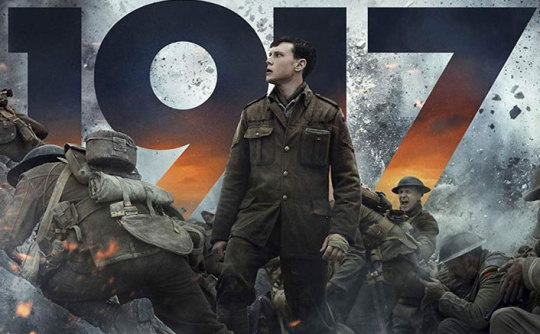
April 6th, 1917 Day! I am so happy this is something that fans of the film celebrate and in a lot of ways it is a day to not only celebrate an incredible film but also a story dedicated to men who actually served and died. Also it has been awhile since I’ve posted anything as life keeps me busy and I’m not big on technology but I thought I would do another analysis on my favorite scene of the film.

It was not easy to choose my favorite scene. The scenes with Richard Madden and Andrew Scott were two of my favorite supporting character scenes. The scene of Schofield riding in the wagon was one of the most emotionally charged scenes. The ‘Night Window’ and ‘Wayfaring Stranger’ scenes are two of the most beautiful and haunting I have ever seen. But it’s the climax, Schofield’s desperate and ill-advised dash over No Man’s Land, that left me wide-eyed and breathless the first time I watched it and still has me tensing up to this day as he poises himself to make that wild run.
Anyone who knows even just snippets of WWI knows that going into No Man’s land is tantamount to suicide. It’s why Wonder Woman climbing over the wall as the men cowered in the trenches was such a powerful and poignant superhero moment. And this scene, while shocking, was actually set up and foreshadowed from the beginning of the film when Lt. Leslie shook his head in annoyed disbelief that two young soldiers were being ordered to cross No Man’s land and walk into the German front lines. He essentially told them “you are going to die”, before they went over. And prior to popping over the top, Schofield stopped Blake and asked, “Are you sure?” because at that time Schofield most certainly was not. But Blake was desperate, and focused on his brother, and this propelled him and Schofield over the top.
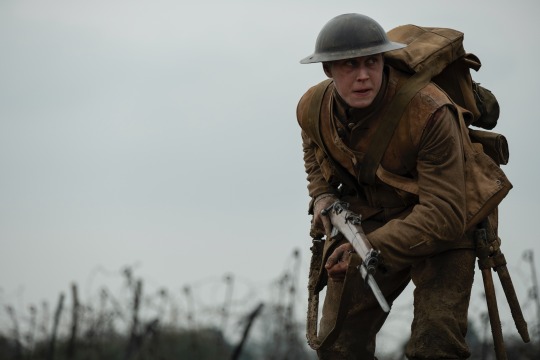
Schofield at this point in the war is absolutely no stranger to death. He has seen death, has smelled it, has been at death’s door himself. But like most soldiers he had forced the reality of death into a compartment of which he kept locked and un-examined. When he crossed No Man’s land at the beginning of the film he barely batted an eyelid at the sight of all those rotting corpses. Men die in war; that’s the reality.
By the film’s climax he prepares to enter No Man’s land again. Now the ground is untarnished, green, whole and hundreds of men have the potential to live one more day. But only if he completes his mission. Only if he finds the strength and the will to keep moving. And not only that but now it’s more than a mission. More than another random assignment from a superior who doesn’t even know his name or his story. Blake had saved his life but he couldn’t save Blake. However, he might be able to save these men. These hundreds and thousands of men on both sides who don’t know that they don’t have to fight today. And Blake’s brother who doesn’t know he’s lost his sibling.
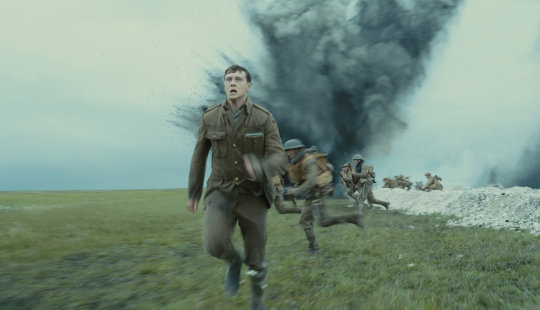
The run across No Man’s land is daring and brave, but in many ways it’s ridiculously stupid and reckless, which is how you know that for Schofield this is no longer about a mission. It’s about a promise. Schofield’s journey has changed him. Blake has changed him and as he climbs into that dangerous territory he carries Blake with him. In many ways ‘Schofield’s Run’ was ‘Blake’s Run’. This was Blake readying himself to pop over the top and nothing was going to stop him from reaching his brother. When you think about how Schofield’s journey transformed him from a man who was wholly uncertain about entering a zone that was potentially dangerous to a man who doesn’t hesitate to enter a zone he knows is insanely dangerous, you come to realize that those who have died are not truly gone when we continue to carry them with us. Schofield carries Blake with him and he will continue to carry him until the day he dies.
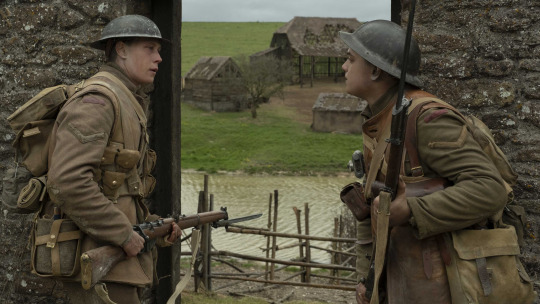
That’s the power of this film and these characters. Schofield’s run means so much more than just being the intense climax of a film. It’s the culmination of his journey. The final transformation of a cautious, battle-worn soldier. It’s a story that shows us that even in the midst of war, these men (boys really) are still human and their experiences, hopes, and fears were extremely real and sharp enough that I sincerely believe there were more than one soldier from that time that if you could have asked would you have taken that risk and run across No Man’s land in order to save hundreds of men from death, their answers would have been hell yes! Which is why the characters of Blake and Schofield, while fictional, fill so real and poignant.
If you read my little breakdown I thank you and hope you enjoyed! Please feel free to share what your favorite scene was and what it means to you!
#1917#will schofield#Thomas Blake#war#spoilers#Sam Mendes#Richard Madden#andrew scott#george mackay#dean charles chapman
108 notes
·
View notes
Text
The Tower: Happily Ever After - 44
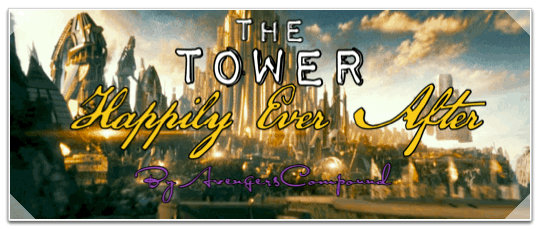
The Tower: Happily Ever After An Avengers Fanfic
Series Masterlist | Character Reference PREVIOUS //
Pairing: Avengers x OFC, Bruce Banner x Bucky Barnes x Clint Barton x Wanda Maximoff x Steve Rogers x Natasha Romanoff x Tony Stark x Thor x Sam Wilson x OFC (Elly Cooper)
Word Count: 1917
Warnings: smut (FFM Bisexual threesome, oral sex, vaginal fingering, vaginal sex, voyeurism, exhibitionism)
Synopsis: Almost 40 years after Elise Cooper first crashed into Natasha Romanoff outside the library at Columbia University, she and the Avengers are adapting to a near-immortal life together with their large brood of children. Yet things aren’t perfect. Life is moving on without them and they’re starting to discover who isolating being immortal can be. When Angela comes and asks Thor to take the throne of Asgard once more, the group leaves Earth in the hopes that they will find their Happily Ever After there.

Chapter 44: The Bachelor Party
The day before Billy and Teddy’s bonding the boys had a joint bachelor party, much the way we did all those years ago. We had planned to attend for a little while and leave before things started getting silly so they could let go without their parents cramping their style. We were acting as the babysitters for the kids anyway. Sarah and Paul had them for a few hours and then we’d come and swap out so they got to join in the fun.
They were celebrating in the feast hall which had been decorated so that rather than resembling the formal Asgardian dining room, it looked like a club back on Earth. Or at last, an Asgardian-themed club back on Earth. There was a bar set up on one side, and couches sat around the outside of the room with small tables. The middle of the room was set up as a dance floor and Loki had even enchanted a light to give off a mirror ball effect. Tony had set up a PA system and Eddie was acting as DJ for the night. Friends and family had been brought in from Earth, including Teddy’s parents, and it was set to be a fun night.
When we arrived, Teddy and Billy were already decorated with the start of their Henhalda, and seeing the artwork up their arms and neck brought me right back to when I was lying on the bed and Katveil was painting me. Coincidentally, Katveil was there when we arrived, having a drink at the bar with Tommy.
I went and greeted the boys first, kissing each on the cheek, before running my thumb down Billy’s neck where I could see the Henhalda poking up under the collar of his shirt.
“Mom, that tickles,” Billy complained, flinching away from me.
I couldn’t help but laugh but dropped my hands. “Seeing it just reminded me of when I was bonded. Who did the work?”
“Kat did,” Billy said.
“She did?” I squeaked excitedly. “She did mine too!”
“I know,” Billy said. “She told me. And let me tell you, it’s pretty weird having your brother’s girlfriend painting around your junk.”
I couldn’t help but snort. Teddy nudged him and laughed. “At least you don’t have a tiny little old man doing it.”
“I think it’s amazing. Like things are going around full circle,” I said, patting his shoulder. “And tomorrow you’ll do your spirit walk and you’ll be bonded forever.”
“Yeah,” Billy said, wrapping his arm around Teddy’s waist and leaning up and kissing the taller man’s cheek. “It’s going to be so great.”
I loved how much they loved each other and I knew that tomorrow I was going to be crying like a baby.
After I’d let them go talk to some of the other guests, I circulated a little, spending time catching up with Katveil and Tommy. They seemed so happy and in that new love period that was full of excitement and a list of firsts that still hadn’t been met. Contrasting that with Billy and Teddy who had already met so many firsts but who were going to have a major one tomorrow, and even me and my chosen people, who had done so much together but kept finding new things out - it was gorgeous to see and made me feel happy deep down into my core.
It was Bruce, Wanda, and I who left the party first. Me for breastfeeding reasons - Bruce and Wanda because parties still weren’t really their thing. When we arrived back at our chambers Rose and Paul barely waited for us to settle in before taking off, happy to have a night off from the kids. Zak, Piper, and Flynn were already in bed, the spare room having been turned into a blanket fort and all three were snuggled inside with a big pile of stuffed animals. Ziggy and Anna were still up but looking very sleepy. Completely ready for bed, but waiting for their grandpa Bruce to read them a bedtime story. I kissed them goodnight and went into the nursery with Wanda to feed the twins.
“Tomorrow is going to be so wonderful,” Wanda said as she helped me get them both in a comfortable position to feed them. “We’ll have all the little ones here when we wake up and then when everyone’s dressed and ready we’ll go down to watch our son bond with his soul mate.”
“I know,” I said, as I rocked quietly with the babies. “We’re very lucky people. They seem so ecstatic.”
Wanda took a seat on one of the sofa chairs and the vulparev both jumped into her lap. She began to stroke them gently and play with their ears. “I can’t wait to see their finished outfits. I had a lot of fun helping choose things. The fabric on Billy’s is so nice.”
“I’m excited too,” I admitted. “And seeing Ziggy and Anna give them away. It’s going to be amazing.”
Wanda hummed and closed her eyes. “I didn’t think I’d ever want to move to Asgard. It was so different to back home. And I grew up poor. This is such a big change, but - I love it, Elly. I feel so happy here.”
“Me too,” I agreed. “There was a false start with me and the post-partum. But I feel like I’m really home.”
Wanda smiled, her whole face lighting up. “Exactly.”
When the babies were both milk drunk, we put them into bed and tucked them in, their vulparevs curled into their sides. Wanda and I made our way back into the bedroom and changed into nightdresses and climbed up the stairs into bed.
“I thought B would be here before us,” I said as we curled up together.
“Those two little rascals are probably making him act out the story,” Wanda giggled. “They know exactly what buttons to press to make their grandparents fold like cards.”
“We’re all a bunch of soft touches,” I giggled and kissed her lovingly.
She responded immediately, wrapping her arms around me and pulling herself up tight against me. It took me a little by surprise, but I quickly melted into it. Her leg moved between mine and she slowly bunched up the skirt of my nightgown. I sat up and pulled it off and she did the same, and we quickly returned to kissing each other.
I pressed my breasts against her and ground down on her thigh. We heard Bruce arrive and I looked up and smiled at him as he stood a little nervously at the side of the bed. Wanda continued to kiss my neck and her hand ran down my stomach to my cunt. “Oh - uh - sorry. Did you want me to come back?”
I giggled and held out my hand. “No, my loves. You’re always welcome here.”
He licked his lips as he watched us. “Can I watch for a little while first?”
“Of course,” I said. “Enjoy the show.”
I tilted Wanda’s chin up to face me and we returned to kissing and grinding down on each other. As I felt myself become more wet and needy, I began kissing my way down her body. I paused at her breasts, squeezing them together and licking over her nipples. She gasped and jerked under me, rutting her hips against my waist, smearing her slick on my skin.
“Elly, oh god, Elly,” she whimpered.
I tried to pull both her nipples into my mouth at once and then went from sucking one to the other. She continued to hump the air under me like she was trying to find something to grip on to.
As I began to kiss lower, I glanced back at Bruce. He was watching on with darkened eyes, his fist pumping up and down his slicked cock. I smiled at him and turned my attention back to Wanda, kissing down her stomach and between her legs. She spread them for me and lifted her hips needly. I couldn’t help the soft laughter that slipped from my lips and I smothered the sound by latching on to her pussy and sucking at it greedily.
The strong heady flavor of her arousal coated my tongue as I pushed it inside her and lapped up over her clit. She mewled, bucking her hips and grabbing my hair as she tried to push me down onto her cunt. I focused my tongue, pushing it up under her clitoral hood and flicking it over the tiny bundle of nerves hidden under it. As I did, I reached under me and spread my labia with my fingers for Bruce to see.
He let out a guttural groan and the bed shifted behind us. As he moved closer the dip became less, and when his hands gripped my hips, they were the smaller calloused hands of Bruce. He slid his cock up and down my folds and with a hard thrust, he entered me.
I moaned loudly into Wanda’s cunt, and she tugged on my hair, trying to get me to focus as Bruce began fucking me from behind. I squeezed my eyes shut for a moment as I adjusted and returned my focus to Wanda.
I pulled her clit between my lips and flicked my tongue back and forth over it. I could feel both Wanda and Bruce’s pleasure seeping down to me through the threads we shared and it deepened mine, making my cunt clench around Bruce’s cock and draw him in deeper to me. Wanda flicked her fingers and a ball of energy vibrated down my spine and settled on my clit and suddenly I lost all sense of self. My hips bucked and my legs trembled as jolts of pleasure surged through me. Every moan and gasp I made was echoed by Wanda as she felt what I felt. I came hard, shuddering around Bruce’s cock and her orgasm followed directly on after it.
I was determined to make her feel just as good as I felt. I thrust two fingers inside her and curled them, dragging them down the ridges of her cunt, again and again, drawing her slick from her and licking it up. When I hit that soft spot inside her, she cried out and bucked her hips up, and squirted on me. The ball of energy intensified and spluttered out, sending me over too. I cried out as came, squeezing around Bruce’s cock.
Wanda pulled me up toward her and I collapsed down on her stomach, my ass popped up in the air as Bruce kept fucking me. “That’s it, Elly,” Wanda cooed. “I’ve got you.”
Bruce groaned, and his hips began to stutter and with a loud moan, he released inside me.
As his cock stilled he slipped out and fell back on his heels and all three of us just stayed like that, breathing heavily with dopey smiles plastered on our faces.
“We made a bit of a mess,” Bruce said.
Wanda giggled. “Blame, Elly.”
“I usually do,” Bruce chuckled, and I couldn’t help laughing.
“Okay, go get me some sheets and I’ll change them,” Wanda said, patting my back.
Bruce and I got up and hurriedly grabbed a fresh set of sheets and Wanda used her magic to change them. We were all changed and in fresh bedding when our drunk spouses started to return, and we all cuddled up in a big pile, excited for what tomorrow was going to bring.

// NEXT
#the avengers#steve rogers#bucky barnes#tony stark#natasha romanoff#bruce banner#clint barton#wanda maximoff#sam wilson#avengers fanfic#avengers x oc#steve rogers x oc#bucky barnes x oc#tony stark x oc#stucky#clintasha#natasha romanoff x oc#wanda maximoff x oc#clint barton x oc#bruce banner x oc#sam wilson x oc#all caps#thor x oc#thor#fanfic#fanfiction#smut#the tower
38 notes
·
View notes
Photo
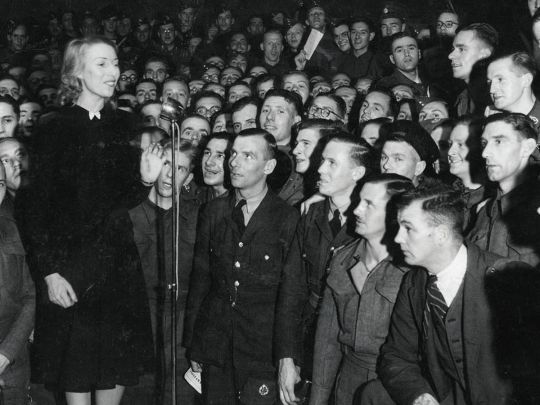
Music is so good for the soul, and during these hard times we must all help each other to find moments of joy.
- Dame Vera Lynn (1917-2020)
Dame Vera Lynn, the beloved British singer, died 103 years old on 18 June 2020. Surprise at her death is swiftly replaced by the sad realisation that it marks the end of a chapter in British history. Many of those who grew up with her music have died during the Covid-19 pandemic. How poignant that her death should come on the day that President Macron arrived in the UK to mark the 80th anniversary of General De Gaulle’s rallying cry to the Free French and to give the Légion d’Honneur to London, the city that weathered the blitz in 1940.
From the battlefields of France, the Netherlands, Italy and North Africa to the Far East, whenever soldiers gathered around a radio set or gramophone, the smooth vocal tones of Vera Lynn were sure to be heard.
It is impossible to gauge whether the outcome of the war was swayed by songs like ‘There'll Always Be an England’, ‘We'll Meet Again’, ‘(There'll Be Bluebirds Over) The White Cliffs of Dover"‘ and ‘A Nightingale Sang in Berkeley Square’.
But for countless men in uniform, the lyrics and the slim, wholesome young blonde woman who sang them seemed to offer a vision of what they were fighting for.
To modern ears, the words might sound corny but at a time when Britain stood proudly against the Germans, their patriotic appeal was irresistible.
Vera Lynn epitomised an archetypical, essentially decent Britishness, practical and fair-minded - notions which shone through the songs she sang.
Even her version of the German soldiers' favourite song, ‘Lili Marlene,’ managed to sound like a patriotic lament, a far cry from the darker sexual undercurrents implicit in the versions by Marlene Dietrich and Lale Andersen - ironically both of them anti-Nazis who became the German forces' sweethearts.

Vera Lynn's most famous song remains We'll Meet Again, recorded in 1939.
Lynn’s wartime popularity was boosted because of the song. The song’s appeal to love and stoicism - "Keep smiling through/Just like you always do/ Till the blue skies/Drive the black clouds far away" -- made it the perfect war-time anthem. It proved powerfully uplifting for departing soldiers, and it has endured as the defining song of the British campaign. The song re-entered the UK charts at No 55 amid the 75th anniversary celebrations of VE Day.
As she wrote later in her 1975 memoir, Vocal Refrain: “Ordinary English people don’t, on the whole, find it easy to expose their feelings even to those closest to them.” We’ll Meet Again would go “at least a little way towards doing it for them”.
In later years, the song, with its reminders of home and exhortations of courage, has become an indispensable part of national commemorations. And, with its swooping and strangely haunting melody, it has entered into popular culture. It forms an ironic accompaniment to the explosion of atom bombs in Stanley Kubrick’s Dr. Strangelove, or How I Learned to Stop Worrying and Love the Bomb (1964); it is deployed with alienating effect in the Pink Floyd song Vera (The Wall, 1982); and it provides the eerie aural backdrop to the Tower of Terror ride in Walt Disney World, California.
But when Lynn began singing it at the age of 22, she had little idea that she would be singing it for the rest of her life.
Indeed the song found favour again this year when Queen Elizabeth II, in a rare public address to the nation, urged Britons to remain strong during the coronavirus lockdown.
"We should take comfort that while we may have more still to endure, better days will return: we will be with our friends again; we will be with our families again; we will meet again," the monarch said.
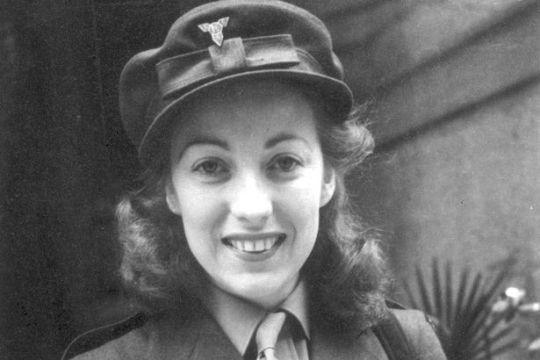
Vera Lynn was born in London's East End on March 20, 1917 as Vera Margaret Welch.
She began singing in local clubs at age seven and joined a child dance troupe, Madame Harris' Kracker Cabaret Kids, at 11. By 15, she was a teenage sensation as a vocalist with the Howard Baker Orchestra.
She adopted her grandmother's maiden name Lynn as her stage name, making her first radio broadcast in 1935 with the Joe Loss Orchestra.
She worked with another of the great names of the pre-war period, Ambrose, whose clarinettist and tenor sax player, Harry Lewis, she was to marry. The couple had one child, a daughter.
In war-time, Vera Lynn came into her own, hosting a BBC radio programme, "Sincerely Yours", appearing in a forces stage revue, and making three films.

So what did Vera Lynn have that propelled her to stardom during the war, when she became the “forces’ sweetheart”? Youth primarily. She was in her early 20s when war broke out – Elsie Carlisle, the iconic singer at this time, was in her 40s and recorded very little during the war, while Gracie Fields, who was astonishingly popular in the 1930s, had the temerity to marry an Italian and sat most of the war out in North America.
The country was aching for a new female singing star and Vera Lynn – youthful, toothily wholesome rather than glamorous, and with an innate modesty that suited an austere and dangerous age that had no time for displays of ego – fitted the bill. She had a powerful, bell-like voice – at times she almost recites the words and employs oodles of vibrato to underscore the emotion of her songs – that was perfect for a singalong. It is when the audience joins in with her songs that you get a lump in the throat.
She came to represent so much, especially to the service personnel she entertained tirelessly during the second world war. She visited Burma, Egypt and India to give concerts for troops stationed there, an act of courage that should not be underestimated. These were difficult, dangerous journeys and not for nothing was she later awarded the Burma Star. She symbolised resilience and indefatigability, embodying a strength of character that transcended mere art. Nazism had no chance against this winsome, optimistic, joyful yet tender young woman.
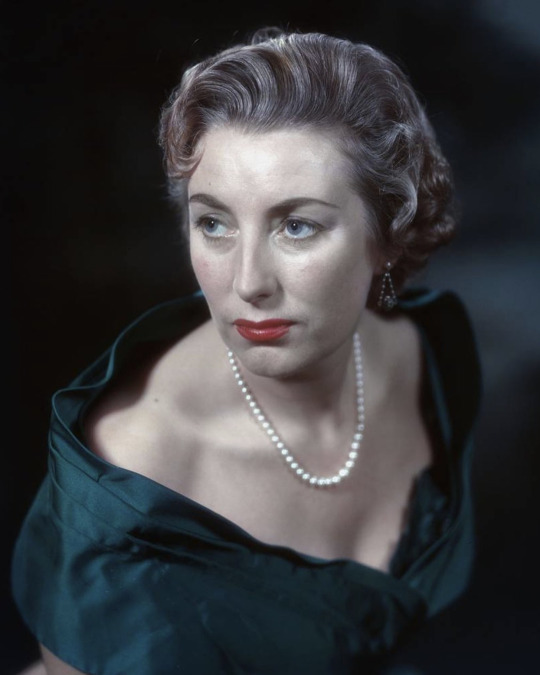
Lynn gave up singing after the war but was persuaded out of retirement in 1947 and began a whole new international career, with appearances in the United States in 1948.
She became the first British artiste to have a US number one with "Auf Wiedersehen, Sweetheart", her most successful record, in 1952. However Vera Lynn's career foundered in the rock and roll era and she cut back on public appearances.
Artistically, it must have been infuriating to be forever associated with the wartime struggle and she did attempt to move on, recording a few Beatles numbers in the 1960s and even making a country disc in 1977. But nothing could shift the way she was seen by the public: a symbol, quintessentially British, of that unimaginably long, bleak, ultimately triumphant wartime struggle; an icon frozen in time.
She accepted her status as a living museum of wartime music and culture with customary good grace. “I never thought the ‘forces’ sweetheart’ tag would stay with me,” she told the Radio Times in 2014, “but it has, hasn’t it? I thought it would last for the war period, then I’d just be another singer. Of course I’ve never minded that everybody always connects me with that time. It was so important.”
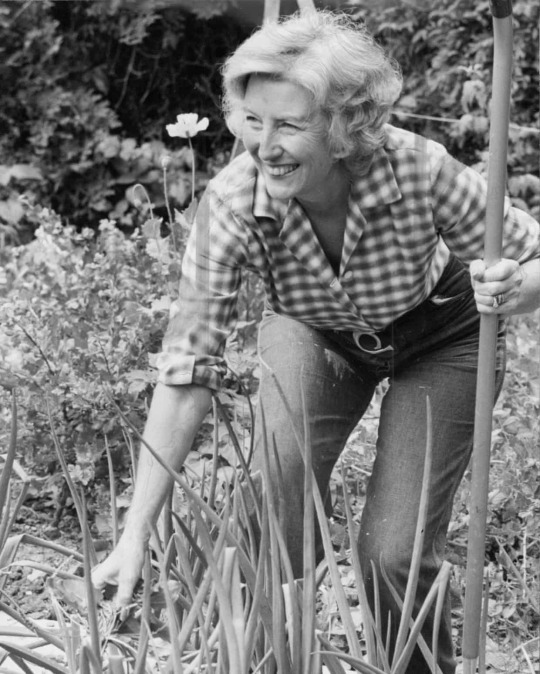
For decades, she was a beloved figure at celebrations to mark the anniversaries of the June 6, 1944, D-Day landings in France or VE Day, the end of the war in Europe on May 8, 1945.
Her last public performance came in 2005, at the 60th anniversary celebrations for VE Day in Trafalgar Square. She performed a snatch of We’ll Meet Again, and told the crowd: “These boys gave their lives and some came home badly injured and for some families life would never be the same. We should always remember, we should never forget and we should teach the children to remember.”
She was awarded an OBE in 1969, and made a dame in 1975, for her charity work. She has given her name to her own breast cancer and child cerebral palsy charities, and has also worked with charities for military servicepeople, including Forces Literary Organisation Worldwide (Flow)
In 2009, at the age of 92, she became the oldest living artist to make it to No 1 on the British album charts, with a greatest hits compilation outselling the Arctic Monkeys.
During the build-up to her 100th birthday in 2017, Dame Vera said she found it "humbling" that people still enjoyed her songs.
The Queen wrote to her: "You cheered and uplifted us all in the war and after the war, and I am sure that this evening the blue birds of Dover will be flying over to wish you a happy anniversary."
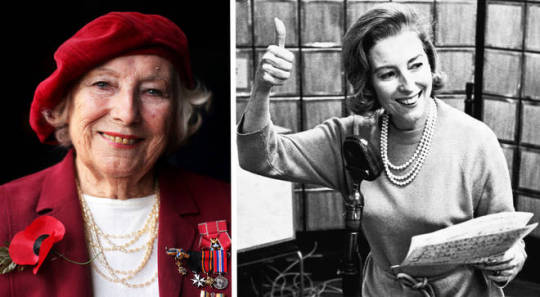
Her songs spoke to people caught up in war, trying to respond to its emotional extremes as best they could. They encapsulate fellowship and battling through, not jingoism, for all the flag-waving that accompanied her appearances at commemorative events. “We’ll meet again, don’t know where, don’t know when.” The lyrics could not be more banal, yet her genuine spirit invested them with deep humanity. As HM Queen Elizabeth II herself understood, what keeps us going in times of war and pandemic is the thought that we will be reunited with our loved ones, when the blue skies drive the dark clouds far away.

RIP Dame Vera Lynn
We’ll meet again....
#vera lynn#quote#life and death#second world war#music#singer#britain#femme#icon#history#forces sweetheart
534 notes
·
View notes
Note
Hello! Have a happy Holiday cluster! It sounds rather fun! How would you be celebrating?
Oh, thank you! :D It was indeed nice to get such a long break (even tho it didn't apply to me lol).
As for celebrating, let me give you a tl;dr of the traditions associated with each of the 3 holidays. (I highlighted the symbols I used in the pic just in case)
Labour Day (1 May)
The holiday started in USA with the workers' strike and rally in 1886, and it still retained some echoes of that event when it got adopted by USSR in 1917.

People would gather in squares and march down the streets with signs and flags (usually red), shouting slogans. Instead of being a protest though, it was retooled into a strictly pro-state holiday celebrating the country's achievements and spring. My grandma said that as schoolkids they were required to prepare hand-made flower branches and participate.
Nowadays it's starting to become politicized again, with several parties and movements using it to bring publicity to their cause. People who aren't interested spend (and had spent) it going on picknics or gathering with friends and family.
Orthodox Easter (2 May)
Usually happening about half a month earlier, but always on Sunday. This holiday used to be banned in USSR since religion was generally looked down upon, but people celebrated it anyway.

Now people are free to observe Lent, go to churches to get their food sprayed with Holy Water, and join Cross Processions, but most just watch the midnight church service on TV, if even that. The biggest symbols of the holiday are the traditional foods: paskha (the quark pyramid in the middle), kulich (the cylindrical breads on the left), and of course the eggs.
The eggs don't come in chocolate variety here, instead real ones are (usually) hard boiled, painted or otherwise decorated, and then eaten. Sometimes between the painting and the eating comes the battle stage: every participant chooses an egg to fight with, and then tries to crack the opponent's egg with thei own.
Victory Day (9 May)
Adopted in 1945, this holiday is supposed to honour those that fought in WWII. Interestingly enough, it wasn't always a state holiday during USSR times, and its prominence, as well as some of its symbols - the Georgian ribbon, for example - are fairly new.

It's accompanied by reruns of war movies during the week it falls on, and on the day itself a big military parade is held in the morning and a big firework show is launched in the evening. People take time to remember their dead relatives and lay flowers (typically red carnations) on their and the Unknown Soldier's graves.
The black-and-orange Georgian ribbon, mentioned above, is actually based on the Order of Saint George from Imperial Russia times, and got revived recently to serve as a symbol for the holiday. Many people decorate themselves or their cars with it around this time.
That didn't turn out very tl;dr ^^; oh well.
Please note that all of these traditions can differ greatly depending on the place, time and people involved. And thank you for the question!
#Hetalia ambassador#Hetalia Russia ambassador#i had thought about adding more symbols to the pic#like the flower branches or a kulich#but i got too lazy lol#Russian holidays
15 notes
·
View notes
Text
Mobile Masterlist
You can find all my fics on Ao3 here (:
My ask box is always open to suggestions so feel free to send them my way if you think it's something I'd write
Fics are listed from newest (top) to oldest (bottom) for each fandom
STAR WARS
Grounded - Leia more or less grounds Poe and feels a little guilty about it, but she has a good reason. Just trust her.
Something Like Hope - Somewhere between Bracca and Bogano Cere tries to settle in their new Jedi and contemplates what his means for them and their misssion. Cal is handling it all as well as he can.
No Place Like Home - The Mantis crew ventures back to Lateron to replace their escape pods after Nur. It goes well, until it doesn’t. Because of course that goes wrong too.
Everything Jaro Tapal Dies not Knowing - Jaro Tapal dies not knowing a lot of things, but most importantly: He dies not knowing the Jedi Order has been destroyed and that there will be no one to take care of Cal when he is gone.
Trinkets - Cal collects objects with happy force echoes because he wants to treasure good memories.
Mothers Without Sons and Sons Without Mothers and Everything in Between - Leia has two sons. One who’s her and left anyway, and one who’s not hers, but stayed nonetheless.
Rain - Rey, Finn and Poe have fun in the rain. That’s basically it.
Look Who's Here! - Peli Motto takes the kid to see Mando after he unexpectedly shows up, but ends up getting roped into their little fight.
Grey - Cal crash lands on Bracca after Order 66 and is left to pick up the pieces on his own,
Not Alone Anymore - Cere comforts Cal after finding him awake and upset in the middle of the night.
Fair - Prauf reflects on his relationship with Cal in the moments before his death.
Of fathers and Grandfathers - The disaster lineage celebrates father's day at the temple.
As the World Falls Apart - In an Alternate Universe where Padmé survives the events of rots her and Obi-Wan are headed to Naboo with the twins, Luke and Leia, to go into hiding as The Empire takes over the galaxy.
Bedmates - Obi-Wan enjoys an early morning at the temple with those closest to him.
Clan of Two - Din shows his face his foundling for the first time.
In the Quiet of the Night - Din reflects on his relationship with the kid before they meet the Jedi.
THE UMBRELLA ACADEMY
No Use Crying Over Spilled Nail Polish - Five and Allison bond over nail polish
Slick With Crimson - Five gets injured and doesn't tell his siblings about it, but they find out. They always do, one way or another [request]
Designated Training Day - Five gets hurt while training.
You Take my Breath Away - The siblings enjoy a nice day at the beach until their oldest/youngest gets pulled under the waves.
Dolores - The siblings comfort Five after the store throws Dolores away.
Peanut Butter and Marshmallows - Five and Vanya bond after spending years apart.
1917
All Good Things Come in Threes - Will Schofield gets his second wound stripe. He deals with it.
MARVEL
Wheatcakes - (Insomniac’s Spider-Man) Peter attempts to make May’s wheatcakes, but it’s not the same. Thankfully MJ is there to cheer him up.
Hope - Scott and Hope have a proper reunion after the battle in Endgame.
Fuck You, Watson - (Insomniac's Spider-Man) Yuri helps an injured Peter home when she finds him lying in an empty shipping yard
Why Would You do That? - (Into the Spider-Verse) In a world where Peter doesn't make it thrugh the portal in time he spends his last minutes with Miles and his family
(Irondad one-shots on Ao3 not posted on Tumblr)
(Ant-Man (and the Wasp) one-shots on Ao3 not posted on Tumblr)
ENCANTO
Bibliophile - Camilo and his relationship with books (and his family)
CHRISTOPHER ROBIN
Comfort - Madeline comforts her father when she finds out he's upset
MIRACULOUS LADYBUG
Beauxbâtons AU | Late Again - Marinette is late to class again
Oops - Chloé accidentally finds out Chat Noir's identity. It somehow does not go badly.
(Mlb one-shots on Ao3 not posted on Tumblr)
FANTASTIC BEASTS
Of Hot Tempers and Cold Rivers - Newt and Theseus gets into an argument and while Newt goes out to clear his head he is attacked [request]
You've Been Hurting for a Long Time - Newt struggles in the aftermath of fbawtft and fbtcog.
Five Times Theseus wished Newt was Normal + The One Time he Didn't - Theseus struggles with his little brother being different and grapples with being an older brother and fitting in.
Chocolate Warms the Soul - Newt and Jacob swing by the Ministry when Dementors surprise them
Salamanders and Porcupines - An AU where Ilvermorny students have an exchange year at Hogwarts and the crew meets as teenagers (WIP).
Welcome Home - Theseus welcomes his brother home after his year long trip around the world.
DTROIT: BECOME HUMAN
(Dbh one-shots on Ao3 not posted on Tumblr)
STARDEW VALLEY
(Sdv one-shots on Ao3 not posted on Tumblr)
4 notes
·
View notes